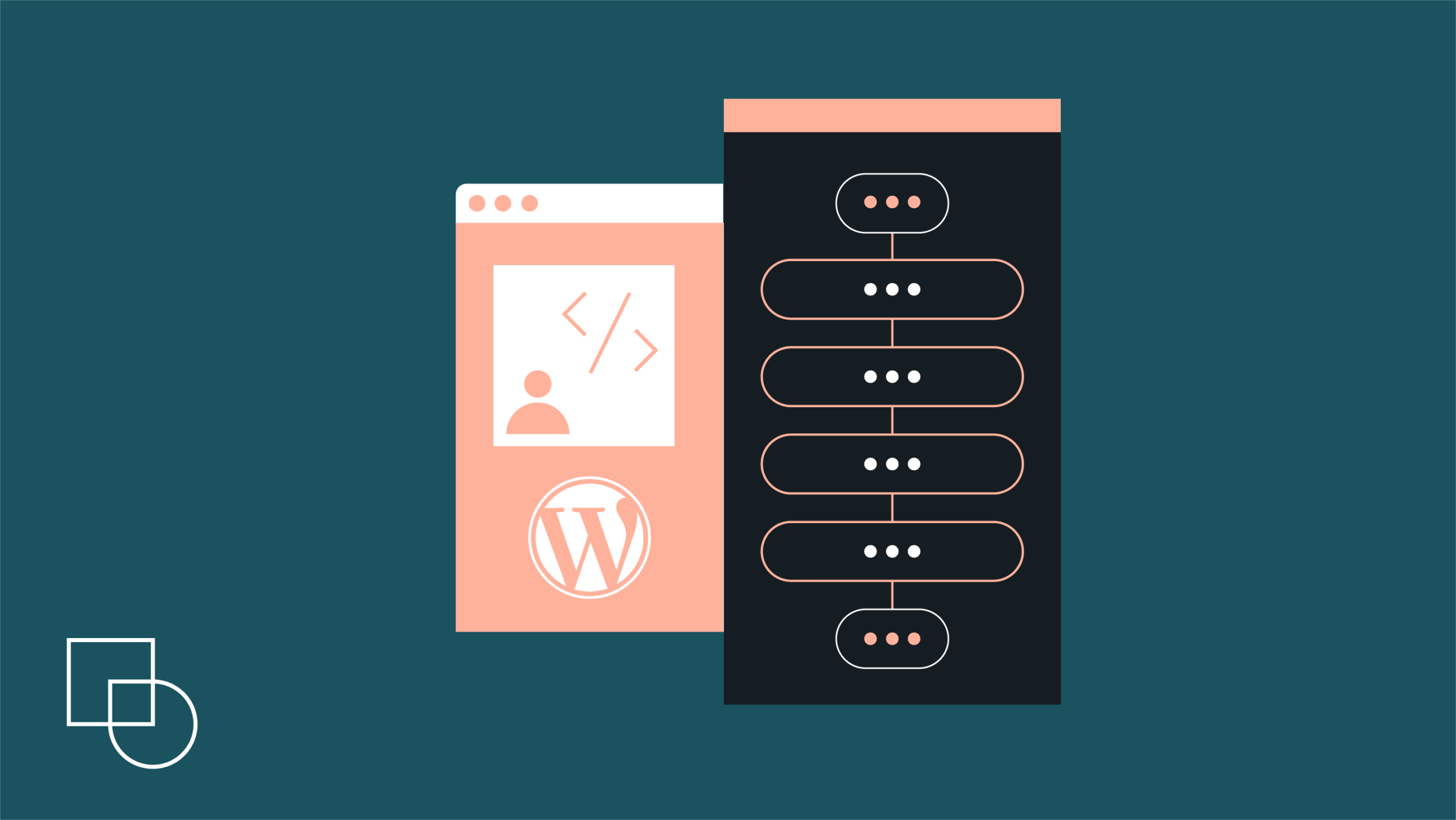Building a standard website is one thing, but creating a successful online store requires a completely different level of expertise. While a general WordPress developer can get a simple site up and running, an eCommerce platform needs a specialist who can blend the right technology, user experience, and business strategy to actually drive sales.
Unlike simple websites that can be pre-loaded to run super fast, online stores are constantly changing with personalized content for every user. This requires a developer with a unique set of critical skills, such as handling secure payments, managing real-time inventory, and protecting customer data, all while keeping the site fast and responsive.
Now, finding a developer with this kind of expertise is a huge challenge. That’s where Codeable, the only freelancer platform exclusively for WordPress experts, comes in. With a demanding vetting process that only 2.2% of applicants pass, Codeable connects you with the top tier of WordPress talent.
But we won’t put the cart before the horse. Let’s first walk you through every stage of developing your online store, from initial setup to scaling your business. Then, we’ll show you how Codeable’s flexible model provides a powerful alternative to traditional hiring.

Get matched with the developer
that is perfect fit for your WordPress or WooCommerce needs.
Start a project
Core responsibilities across the eCommerce development lifecycle
A WordPress eCommerce developer’s role is not a single, static job but an evolving set of responsibilities that adapts as a business grows from a promising startup into a high-volume enterprise. Understanding this journey is key to hiring the right talent and setting clear expectations from day one.
The website development lifecycle can be divided into four distinct phases, each with specific tasks, focus, and the strategic value a developer brings. This will clarify what they do, when they do it, and why each step is critical for long-term success.
Phase 1: Initial setup and configuration
In the beginning, the developer’s main goal is to build the architectural groundwork for a functional and secure online store. This foundational phase is all about translating a business’s vision into a tangible platform ready to welcome its first customers. It’s less about flashy custom features and more about getting the essential mechanics right from day one.
The developer’s focus is on creating a seamless and intuitive shopping journey. Core tasks at this stage include:
- Platform setup. This involves installing WordPress and configuring WooCommerce as the core eCommerce engine.
- Theme selection and customization. They choose and customize a WordPress theme that aligns with the brand’s identity and ensures a flawless, responsive experience on desktops, tablets, and mobile devices.
- Essential plugin integration. The true power of WordPress comes from its ecosystem of plugins. A developer will install and configure key plugins for search engine optimization (SEO), security, and performance. This extends the store’s core functionality without needing to write custom code from scratch.
- Payment gateway integration. They securely connect essential payment processors like Stripe and PayPal, making sure every transaction is safe.
- Product catalog creation. They set up the initial product catalogs with proper categorization and attributes to make browsing easy for customers.
- Logistics configuration. Using specialized plugins, they establish tax rules based on geographic locations and integrate shipping carriers to handle delivery efficiently.
- Foundational security. They implement an SSL certificate and other baseline security measures to protect the store and its customers from the very beginning.
The result of this phase is a stable, secure, and user-friendly online store, fully prepared to accept its first orders.
Phase 2: Custom development and competitive differentiation
As a business grows, standard themes and plugins eventually can’t keep up. This is when a developer shifts from simply setting things up to building custom solutions that give the business a true competitive edge and make the brand unique in a crowded market.
Instead of relying solely on generic tools, a skilled developer will write clean, efficient code to create a tailored experience. This includes:
- Building custom themes. They can develop a WordPress theme from the ground up, ensuring it perfectly matches the brand’s unique vision instead of trying to fit it into a pre-built template.
- Creating lightweight plugins. For special features like advanced product filters or unique subscription models, a developer can build a custom plugin. This is a game-changer because it avoids the slow performance caused by bulky, all-in-one plugins bloated with features you don’t need.
- Connecting business systems. They can seamlessly integrate the store with other critical tools, like a customer relationship manager (CRM), inventory system (ERP), or marketing software. This creates a smooth, automated ecosystem that supports specific business needs.
The goal is to create a shopping experience that generic solutions simply can’t replicate. By developing features like a streamlined checkout process or personalized product recommendations, a developer builds tools that directly boost sales and increase customer loyalty. At this stage, technology becomes a key driver of your business’s growth.
Phase 3: Ongoing maintenance and security
Once a store is live, the developer’s role shifts to that of a guardian, ensuring the site’s integrity and availability. This is a proactive, not reactive, responsibility.
An online store is a dynamic asset that requires constant vigilance, as any amount of downtime translates directly into lost revenue and customer trust. The developer’s primary objective is to keep the store stable, secure, and available 24/7.
This stage involves a continuous cycle of protective measures, including but not limited to:
- Regular updates. They perform routine updates to the WordPress core, themes, and plugins to patch security vulnerabilities and maintain compatibility.
- Comprehensive security. They implement robust security strategies, including Web Application Firewalls (WAF), regular malware scanning, and strict user access controls to fend off eCommerce-specific threats like payment data breaches.
- Disaster recovery planning. They manage and test a robust backup system, ensuring that if the worst happens, the store can be restored quickly with minimal data loss.
- Proactive troubleshooting. They are responsible for monitoring, identifying, and resolving bugs, plugin conflicts, or performance issues before they impact customers.
- Rapid response. When critical issues arise, such as a failed checkout or a payment processing error, they must act immediately to diagnose and fix the problem.
The developer is expected to maintain detailed documentation and keep a watchful eye on your site to ensure it remains a safe and reliable place for business.
Phase 4: Performance optimization and scaling – The growth engineer
When an online store begins to attract significant traffic and handle a high volume of transactions, the developer evolves into a performance engineer. The focus is no longer just on maintaining features but on ensuring the underlying architecture can withstand the pressures of success.
The singular goal is to maintain a fast and reliable user experience under heavy load, enabling the business to grow its revenue without being held back by technology.
This advanced phase involves deep technical optimizations to handle scale. Key responsibilities include:
- Database optimization. The developer fine-tunes the database by indexing key WooCommerce tables (like wp_postmeta and wp_posts) and cleaning out bloated data to make data retrieval lightning-fast.
- Sophisticated caching strategies. They implement a multi-layered caching system, which is critical for dynamic eCommerce sites. This includes page caching for static content, object caching with tools like Redis or Memcached to speed up database queries, and browser caching for returning visitors.
- Content Delivery Network (CDN) configuration. If required, the developer might set up a CDN to distribute store assets across the globe, reducing latency for international customers.
- Infrastructure preparation. They prepare the site for massive traffic spikes during events like Black Friday by load testing the server, scaling resources, and optimizing the site to handle thousands of concurrent checkouts without timeouts.
- Asset and front-end optimization. They continuously improve performance by implementing modern image formats like WebP, minifying CSS and JavaScript files, and monitoring Core Web Vitals to enhance the user experience and boost conversions.
Understanding developer seniority levels and their impact
Hiring a developer isn’t a one-size-fits-all decision. The right expert for your business depends entirely on your current needs, future goals, and budget. A common and costly mistake is hiring a junior developer for a senior-level strategic role or vice versa. Understanding these differences between seniority levels is crucial for building a successful team and a thriving online store.
Junior developers (0-2 years): Task executors
A junior developer is a task executor who works under the guidance of more senior team members. Their role is focused on implementation, not strategy, and they are perfect for businesses that already have technical leadership in place and need an extra pair of hands for routine work. Overburdening them with complex architectural decisions is a recipe for failure.
Their primary responsibilities are task-oriented and can include:
- Making content and style updates using HTML and CSS.
- Installing and configuring plugins under direct supervision.
- Assisting with basic site maintenance and backups.
- Conducting cross-browser and device testing to ensure features work as expected.
Hiring a junior developer is a cost-effective way to handle simple, well-defined tasks, but they cannot be expected to solve complex problems independently.
Mid-level developers (2-5 years): Project managers
A mid-level developer operates with a greater degree of autonomy and is capable of managing entire projects from start to finish. They are the ideal choice for growing businesses that need reliable feature delivery without constant oversight. They act as the bridge between your design and marketing teams and the technical implementation, ensuring everyone is on the same page.
These developers are project-oriented and can handle most day-to-day development needs. Their capabilities often include:
- Building and customizing themes and plugins independently.
- Troubleshooting most technical issues with minimal supervision.
- Implementing third-party API integrations for payment gateways, shipping providers, and marketing tools.
- Managing version control and staging/deployment workflows to ensure smooth updates.
- Optimizing site performance using standard, proven techniques.
While they can deliver complete, functional websites, they may still need guidance on the more complex architectural challenges.
Senior developers (5+ years): Strategic architects
A senior developer goes beyond project execution to become a strategic technical leader. They architect complex, scalable eCommerce solutions from the ground up and ensure the technology serves the company’s long-term business goals. They are essential for any business planning for significant growth or facing enterprise-level challenges.
Their focus is business-oriented, and they are generally responsible for:
- Designing the entire technical blueprint of a store to ensure scalability and stability.
- Overseeing all code development to maintain high standards of quality and reusability.
- Performing advanced performance tuning of the database and server environment.
- Mentoring junior and mid-level developers.
- Collaborating directly with stakeholders to align the technical roadmap with company objectives.
- Defining the store’s security architecture and data protection strategies.
- Making critical decisions about technical debt, platform limitations, and when to build a custom solution versus buying an existing one.
Crafting the perfect job description and interview process
Acquiring the right technical talent is one of the most critical investments an eCommerce business can make. But how do you separate the true experts from those who just know how to install a few plugins?
That requires a strategic approach rather than generic recruitment tactics. You need to start with a compelling job description that attracts top candidates and culminates in an interview process designed to reveal real-world competency.
Essential components of an eCommerce developer job description
A well-crafted job description is your most important tool for attracting high-quality candidates. It must be clear, compelling, and accurately reflect the demands of the role.
Start with a strong summary that defines the position’s impact. For instance:
“We are seeking a WordPress eCommerce Developer to be the creative and technical force behind our online store, responsible for designing, developing, and optimizing a high-performing shopping experience that captivates and converts visitors.”
Next, detail the key responsibilities and technical requirements. Be specific to help candidates self-qualify.
Key responsibilities should include:
- Designing, developing, and maintaining the WordPress/WooCommerce site to ensure optimal performance, security, and user experience.
- Building custom themes and plugins from scratch to meet specific project needs.
- Integrating third-party services like payment gateways, shipping providers, and CRM platforms.
- Optimizing the site for speed, Core Web Vitals, and efficient checkout flows.
- Implementing robust security measures to protect sensitive customer data.
- Collaborating effectively with design, marketing, and content teams.
Technical requirements:
- Advanced proficiency in PHP, JavaScript (ES6+), HTML5, and CSS3.
- Deep knowledge of WordPress architecture (hooks, REST API) and the WooCommerce database structure.
- Experience with Git and staging/deployment workflows.
- Strong MySQL optimization and debugging skills.
Finally, highlight what you offer to attract top talent, such as a competitive salary (or rates of $80-$120/hour for contractors), a professional development budget, flexible work arrangements, and the chance to directly impact the company’s success.
Critical skills to evaluate: the essential skill matrix
A simple checklist of programming languages is not enough when your revenue is on the line. Use this skill matrix as a guide to identify a truly well-rounded expert.
Technical skills:
- WordPress and WooCommerce mastery. A true expert understands the deep architecture of both platforms. This includes knowing the WordPress template hierarchy, hooks (actions and filters), and REST API, as well as WooCommerce-specific hooks, database tables for orders and products, and checkout flow customization.
- Performance optimization. They must be fluent in multi-layered caching strategies (page, object, and browser), CDN implementation, and asset optimization to ensure the site is fast and responsive.
- Security expertise. Look for a strong grasp of security principles, including OWASP vulnerabilities, SSL/HTTPS implementation, PCI compliance for payments, and data protection regulations like GDPR.
- Development best practices. A professional developer writes clean, well-documented code, uses version control like Git without fail, and is skilled at debugging with tools like Query Monitor.
Professional skills:
- Stakeholder communication. They must be able to explain complex technical decisions clearly to non-technical team members and clients.
- Problem-solving. A great developer thinks strategically, performing root cause analysis to find permanent solutions rather than just patching symptoms.
- Project management. They can provide accurate time estimates and prioritize tasks based on their impact on business goals.
- Accountability and continuous learning. The best developers take ownership of their work, deliver on their promises, and are committed to staying current with the evolving WordPress ecosystem and emerging security threats.
Interview questions that reveal real expertise
A successful interview must assess not just what a candidate knows, but how they think and solve problems in a real-world eCommerce context. The most valuable insights come from scenario-based questions that simulate the high-stakes challenges specific to online retail.
You can use these questions as a starting point for competency testing.
| Scenario-based questions: You’ve just deployed an update, and customers report that the ‘Add to Cart’ button is not working. Walk me through your immediate debugging process to fix it with minimal impact on sales. A client’s checkout page is timing out during a flash sale. Explain your diagnostic approach, from the front-end to the back-end, to find the bottleneck. You inherit a WooCommerce store with over 60 active plugins and a history of poor performance. What’s your strategic plan to audit the site and create a path to stability? Technical and architectural assessment: A client anticipates a 10x traffic spike for a 48-hour campaign. Outline your preparation plan, covering hosting, caching, database optimization, and third-party API rate limits. Explain the difference between object caching and page caching, and why object caching is so critical for a high-volume WooCommerce store? How do you decide whether to build a custom feature from scratch versus modifying an existing plugin? What are the long-term maintenance implications? Security and compliance: Walk through the key steps of integrating a new payment gateway, focusing on the security considerations and requirements for PCI compliance. How do you handle and store sensitive customer data to ensure the store is compliant with regulations like GDPR? |
Why Codeable offers the best of both worlds
Finding a truly qualified WordPress eCommerce developer in a sea of generalists can feel impossible. The risk of hiring someone who can’t deliver is high, and the cost of a bad hire can set a business back for months.
Codeable was built to solve this problem by combining elite, pre-vetted talent with the flexibility your business needs to grow.
Our rigorous 6-stage vetting process, which includes a technical exam, a live coding test, and a 90-day trial period, ensures that only the top 2.2% of applicants make it onto the platform. This means you get instant access to world-class specialists without the guesswork.
We also have a unique single-price model that eliminates bidding wars, providing a fair, transparent estimate so you can choose an expert based on their skills, not the lowest price.
This model provides two flexible ways to engage with talent:
- Fixed-scope projects. Get a clear budget for specific tasks, from small fixes to complete site builds.
- Staff augmentation. Embed a trusted developer into your team on a retainer basis ($80-$120/hour) for long-term growth.
Every project is backed by a 28-day bug-fix warranty, secure escrow payments, and a dedicated support team, while matching often happens in just a few hours.
With a 4.95/5 average rating and over 300,000 completed projects, the results speak for themselves. Partnering with Codeable is the smartest way to mitigate risk, eliminate hiring overhead, and scale your development resources exactly when you need them.
Post your project to get matched with an expert today!

 Dream It
Dream It

